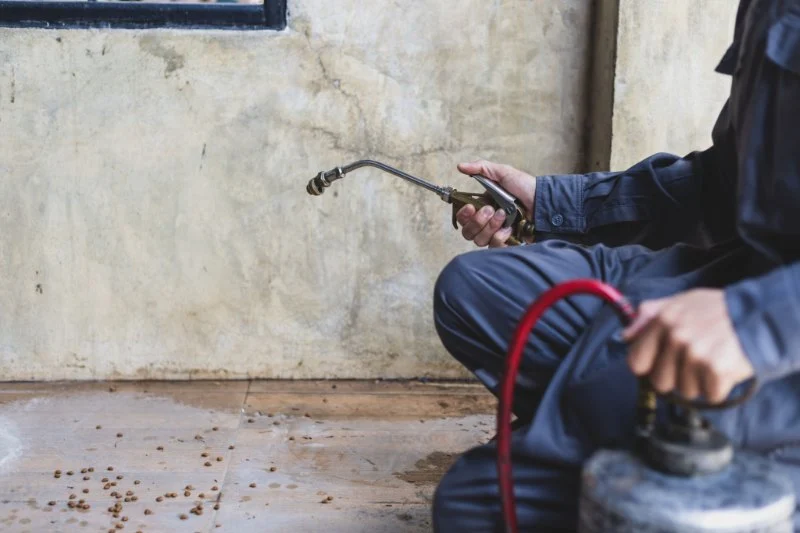
How to Manage Pest Issues in Older Homes
- 1. Unique Challenges of Pests in Older Homes
- 2. Common Pests Found in Older Homes
- 3. Preventing Pests in Older Homes
- 4. Effective Pest Control Methods for Older Homes
- 5. Real-Life Examples and Success Stories
1. Unique Challenges of Pests in Older Homes
Older homes come with unique charm, but they also come with their own set of challenges, particularly when it comes to pest management. The age of the structure, combined with outdated building materials, can create inviting spaces for pests to thrive. Over time, cracks in the foundation, gaps in windows, and worn-out insulation become easy access points for pests. Moreover, older homes may have unseen damage, like decaying wood or moisture issues, which can attract a variety of insects and rodents.
Understanding these challenges is the first step in developing an effective pest control plan. By identifying the potential weak spots in an older home, you can proactively address pest issues before they become major problems.
2. Common Pests Found in Older Homes
Several types of pests are more likely to invade older homes due to the conditions created by aging structures. Here are some of the most common pests found in older houses:
- Termites: Termites are a major concern for older homes, as they feed on wood and can cause extensive structural damage before they're even noticed.
- Rodents: Rats and mice are frequently found in older houses because of the numerous entry points and the potential for finding food and shelter in attics, basements, and walls.
- Cockroaches: Cockroaches love dark, damp environments, which older homes often provide in basements, kitchens, and bathrooms.
- Bed Bugs: These pests can be a problem in older homes due to the presence of older furniture, bedding, and carpeting that provide ideal hiding places for bed bugs.
- Ants: Carpenter ants, in particular, are attracted to decaying wood and can infest homes with structural damage.
3. Preventing Pests in Older Homes
Prevention is key when managing pest issues in older homes. Here are some proactive steps to reduce the risk of infestation:
- Seal Cracks and Gaps: Inspect the foundation, walls, windows, and doors for cracks or gaps that could allow pests to enter. Use caulk, weatherstripping, or expanding foam to seal these openings.
- Maintain the Roof and Gutters: Leaky roofs and clogged gutters can create moisture problems, attracting pests like termites and ants. Regularly clean and maintain your roof and gutters to prevent water damage.
- Repair Wood Damage: Worn-out wood, especially in older homes, can be a magnet for termites and carpenter ants. Regularly inspect and repair wooden surfaces to eliminate potential breeding grounds for pests.
- Control Moisture Levels: Excess moisture in areas like basements, crawl spaces, and attics can attract a range of pests. Use dehumidifiers or address any leaks to reduce moisture in these areas.
4. Effective Pest Control Methods for Older Homes
Once you’ve taken preventive measures, it’s time to consider effective pest control methods for your older home. Some of the most effective strategies include:
- Integrated Pest Management (IPM): IPM combines multiple pest control strategies, including physical barriers, biological control, and targeted pesticide application when necessary. This holistic approach ensures that you address the root causes of pest problems while minimizing the use of harmful chemicals.
- Professional Pest Control Services: Hiring a professional pest control company can help address severe infestations. Experts can provide targeted treatments for specific pests, such as termite treatments or rodent control, and offer long-term monitoring and prevention.
- Traps and Baits: For smaller pests like rodents or ants, traps and baits can effectively control the population. Place traps in areas where pests are most active and monitor them regularly.
- Eco-Friendly Solutions: For homeowners seeking non-toxic options, there are various eco-friendly pest control solutions available, such as diatomaceous earth, essential oils, and non-chemical traps.
5. Real-Life Examples and Success Stories
Let’s look at a couple of real-life examples of pest management in older homes. In one case, a homeowner in a historic house in New England discovered a significant termite infestation in the wooden beams of their attic. By hiring a professional pest control service, they applied a targeted termite treatment and sealed the entry points, saving the structural integrity of their home.
Another success story comes from a family in a 100-year-old Victorian house in the Midwest. They had frequent issues with rodents entering through small gaps in their walls. After sealing these gaps and implementing regular inspections, they no longer faced rodent problems. They also used traps and bait to ensure that no new rodents would enter, effectively controlling the issue without chemicals.
These examples show that managing pest issues in older homes is entirely possible with the right approach, a bit of proactive maintenance, and sometimes professional help. By staying vigilant and using the appropriate methods, you can keep your older home pest-free.
If you’re dealing with pest issues in your older home, visit PestControlHub for expert advice and the best products to help with pest management and prevention.








 Wildlife Resolutions4.0 (443 reviews)
Wildlife Resolutions4.0 (443 reviews) Pest Marshals of Toledo5.0 (2 reviews)
Pest Marshals of Toledo5.0 (2 reviews) LS Rodent Proofing & Pest Control Service5.0 (4 reviews)
LS Rodent Proofing & Pest Control Service5.0 (4 reviews) Best Termite & Pest Control4.0 (16 reviews)
Best Termite & Pest Control4.0 (16 reviews) Varment Guard Wildlife Services5.0 (28 reviews)
Varment Guard Wildlife Services5.0 (28 reviews) Pestban Inc4.0 (394 reviews)
Pestban Inc4.0 (394 reviews) How to Use Monitors to Detect Pest Entry: A Comprehensive Guide
How to Use Monitors to Detect Pest Entry: A Comprehensive Guide How to Predict Which Pests Will Invade Next – Smart Pest Forecasting for the U.S.
How to Predict Which Pests Will Invade Next – Smart Pest Forecasting for the U.S. How to Conduct a Pest Risk Assessment at Home – Expert Guide
How to Conduct a Pest Risk Assessment at Home – Expert Guide How to Block Pest Entry Around Deck Joists: Effective Solutions
How to Block Pest Entry Around Deck Joists: Effective Solutions How to Safely Use Fumigation Methods: A Comprehensive Guide for Homeowners
How to Safely Use Fumigation Methods: A Comprehensive Guide for Homeowners Why Pests Are More Active After Rain: Understanding the Link Between Weather and Pest Behavior
Why Pests Are More Active After Rain: Understanding the Link Between Weather and Pest Behavior